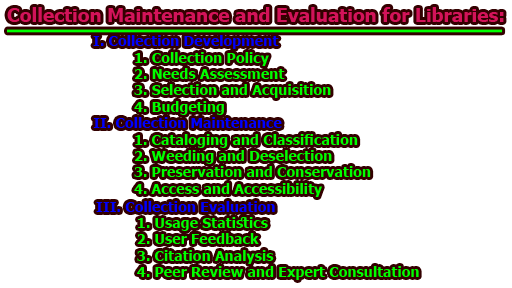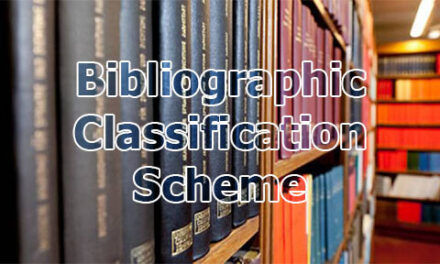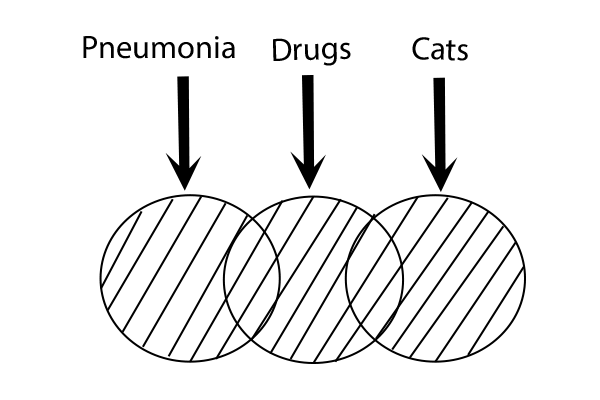Collection Maintenance and Evaluation for Libraries:
In the ever-evolving digital age, libraries continue to play a crucial role in providing access to information and knowledge. One of the fundamental tasks of librarians is to maintain and evaluate the library collection. Collection maintenance involves the systematic management of resources, ensuring their availability, relevancy, and usability to meet the needs of library users. This article aims to delve into the details of collection maintenance and evaluation for libraries, outlining the key processes, strategies, and considerations involved.
I. Collection Development:
- Collection Policy:
- Establishing a collection policy that outlines the library’s goals, target audience, scope, and selection criteria. The policy should be developed in consultation with library staff, administrators, and other stakeholders.
- Reviewing and updating the collection policy periodically to align with changing user needs and emerging trends. This ensures that the collection remains relevant and meets the evolving demands of the library’s user community.
- Needs Assessment:
- Conducting a thorough needs assessment by analyzing user demographics, preferences, and research interests. This can be done through surveys, focus groups, or direct interaction with library users.
- Identifying gaps and areas of improvement in the existing collection based on user feedback, requests, and usage statistics. This helps prioritize acquisition efforts and ensures that the collection reflects the diverse needs of the user community.
- Selection and Acquisition:
- Developing a systematic approach for selecting materials that align with the collection policy. This involves considering factors such as relevance, authority, accuracy, currency, and cost.
- Employing a variety of methods for acquisition, such as purchase, donation, exchange, interlibrary loan, and digital licensing agreements. Libraries should explore partnerships with other institutions to expand their collection resources.
- Budgeting:
- Allocating sufficient funds for collection development, considering factors like inflation, pricing, and user demands. A well-planned budget allows for strategic acquisitions and ensures the overall health and growth of the collection.
- Balancing budgetary constraints with the need for diverse and up-to-date resources. Libraries may consider leveraging grant opportunities, sponsorships, or collaborative purchasing arrangements to maximize their purchasing power.
II. Collection Maintenance:
- Cataloging and Classification:
- Ensuring accurate cataloging and classification of all acquired materials for easy retrieval. Libraries should adhere to recognized standards and protocols such as MARC (Machine-Readable Cataloging) and Library of Congress Classification.
- Maintaining an updated catalog that provides comprehensive and accurate information about the collection, including metadata, subject headings, and call numbers. This allows users to navigate and locate resources efficiently.
- Weeding and Deselection:
- Regularly reviewing the collection to identify materials that are outdated, damaged, or no longer relevant. Libraries should establish weeding policies and guidelines to ensure consistency in the deselection process.
- Applying established criteria, such as condition, usage statistics, and duplication, to make informed decisions regarding deselection. Weeded materials can be donated, sold, or discarded depending on their condition and value.
- Preservation and Conservation:
- Implementing strategies to preserve and conserve materials, including appropriate storage conditions, security measures, and disaster recovery plans. Libraries should invest in suitable shelving, temperature and humidity control systems, and archival supplies to protect physical materials.
- Collaborating with preservation specialists for the maintenance and repair of damaged or fragile items. This may involve seeking professional assistance for bookbinding, digitization, or restoration projects.
- Access and Accessibility:
- Ensuring seamless access to the collection through various channels, including physical and virtual platforms. Libraries should prioritize user-friendly interfaces, intuitive search functionalities, and user authentication systems.
- Implementing technologies and tools that enhance accessibility for users with disabilities, such as braille or large-print materials and assistive technologies. Libraries should comply with accessibility standards and guidelines to provide equal access to all patrons.
III. Collection Evaluation:
- Usage Statistics:
- Collecting and analyzing data on the usage of library materials, including circulation statistics, interlibrary loan requests, and database usage. Libraries can use integrated library systems or specialized software to track and generate reports on resource usage.
- Identifying trends, patterns, and areas of high demand or underutilization to inform collection development decisions. Usage statistics provide valuable insights into the effectiveness and relevance of the collection.
- User Feedback:
- Encouraging user feedback through surveys, focus groups, and suggestion boxes to understand their satisfaction levels and specific needs. Libraries can also utilize online platforms and social media to gather feedback from a broader user base.
- Incorporating user feedback into collection decision-making processes. This helps ensure that the collection aligns with the preferences and expectations of the user community, fostering a sense of ownership and engagement.
- Citation Analysis:
- Conducting citation analysis to determine the impact and relevance of library materials in scholarly publications. Libraries can use citation databases and tools to track citations to resources held within the collection.
- Identifying frequently cited resources and evaluating their availability and accessibility within the library collection. This analysis can guide decisions on resource allocation and subscription renewals for digital resources.
- Peer Review and Expert Consultation:
- Engaging subject specialists, faculty members, and researchers to review and assess the quality and relevance of resources within specific subject areas. This can be done through formal peer review processes or by establishing advisory committees.
- Seeking external expert opinions through collaborations with other institutions or professional networks. Libraries can benefit from the expertise of scholars and practitioners in diverse fields to ensure the collection meets high academic and research standards.
It is apparent that collection maintenance and evaluation are vital components of effective library management. By following a well-defined collection development policy, conducting needs assessments, and implementing strategic acquisition strategies, libraries can ensure their collections meet the diverse needs of their user community. Regular evaluation based on usage statistics, user feedback, citation analysis, and expert consultation enables libraries to make informed decisions about resource allocation, weeding, and preservation. By continually updating and refining their collections, libraries can provide valuable information resources that meet the evolving needs of their patrons in the digital age.
FAQs:
What is collection maintenance in libraries?
Collection maintenance refers to the systematic management and upkeep of library resources to ensure they remain accessible, relevant, and in good condition for library users. This process involves tasks such as cataloging, shelving, weeding, and preservation.
Why is collection maintenance important for libraries?
Collection maintenance is crucial for libraries to provide quality services to their users. It ensures that materials are organized for easy retrieval, weeds out outdated or irrelevant resources, preserve valuable materials, and enhances overall user satisfaction.
What is the purpose of collection evaluation in libraries?
Collection evaluation allows libraries to assess the effectiveness and relevance of their collections. By analyzing usage statistics, user feedback, citation data, and expert opinions, libraries can make informed decisions about resource allocation, acquisition, and deselection.
How often should a library review and update its collection policy?
A library should review and update its collection policy periodically, ideally every three to five years. However, the frequency of updates may vary based on changes in user needs, technological advancements, and shifts in the library’s mission or objectives.
What are the criteria for selecting materials for the library collection?
Selection criteria typically include relevance to the library’s focus and users, accuracy, authority, currency, and overall quality. Budget constraints, user demand, and availability of resources also influence the selection process.
How can a library improve accessibility to its collection?
Libraries can improve accessibility by offering various formats of materials, such as braille or large-print versions, accommodating different reading levels, and providing assistive technologies for patrons with disabilities. Additionally, user-friendly search interfaces and clear signage contribute to better accessibility.
What is weeding, and why is it important for collection maintenance?
Weeding is the process of removing outdated, damaged, or rarely used materials from the collection. It is essential for maintaining a relevant and user-centric collection, making room for new resources, and ensuring efficient use of library space.
How can a library preserve and conserve its physical collection materials?
Libraries can preserve and conserve physical materials by implementing proper storage conditions, ensuring temperature and humidity control, and using archival-quality materials. Collaborating with preservation specialists can help repair damaged items and prolong their lifespan.
How can a library assess the impact of its collection on research and scholarship?
Libraries can use citation analysis to determine the influence and relevance of their resources in scholarly publications. This involves tracking citations to resources held within the library collection and identifying frequently cited materials.
What role do user feedback and surveys play in collection evaluation?
User feedback and surveys provide valuable insights into user satisfaction, preferences, and specific needs. This feedback helps libraries understand how well their collection meets user expectations and informs decision-making for future acquisitions and improvements.
How can libraries involve subject specialists and experts in collection evaluation?
Libraries can engage subject specialists, faculty members, and researchers to review and assess the quality and relevance of resources in specific subject areas. These experts can provide valuable feedback on the collection’s academic and research value.
Is digital collection maintenance different from physical collection maintenance?
While some aspects of collection maintenance, such as selection and evaluation, apply to both physical and digital collections, digital collection maintenance involves unique challenges such as licensing, copyright compliance, and ongoing access to electronic resources.
References:
- Johnson, P. (2017). Fundamentals of Collection Development and Management (4th ed.). American Library Association.
- Evans, G. E., & Saponaro, M. Z. (2016). Developing Library and Information Center Collections (6th ed.). Libraries Unlimited.
- Sollenberger, M. J. (2017). Weeding Library Collections: Library Weeding Methods. Libraries Unlimited.
- Baker, D., & Evans, G. E. (Eds.). (2018). Introduction to Reference and Information Services in Today’s School Library (3rd ed.). Rowman & Littlefield.
- Luo, L. (2015). Collection Evaluation in Academic Libraries: A Practical Guide for Librarians. Rowman & Littlefield.
- Williamson, N. J., & Rieger, O. Y. (2018). Library Collection Assessment Through Statistical Sampling. Libraries Unlimited.
- Crawford, W. (2019). The Importance of Library Collection Management in Academic Libraries. The International Journal of Information, Diversity, & Inclusion, 3(1), 32-44.
- Wiggins, R. J. (2017). Digital Collection Development: A Practical Guide. Rowman & Littlefield.
- Allen, B. J. (2018). Collection Development in the Digital Age. In Libraries and the Digital Age (pp. 37-57). ABC-CLIO.
- Lancaster, F. W., & Williamson, N. J. (2015). Evaluating the Academic Library: A Practical Guide for Librarians (Rev. ed.). Rowman & Littlefield.
- Abels, E. G., & Pappalardo, P. (Eds.). (2016). Introduction to Collection Development for School Library Media Programs (4th ed.). Libraries Unlimited.
- Baughman, J. (2019). Assessing and Enhancing Library Collection Space for Student Engagement and Community Building. Reference & User Services Quarterly, 59(1), 46-53.
- Evans, G. E., & Carter, J. G. (2017). Planning and Implementing Resource Selection in Libraries. In Strategic Planning for Library Managers (pp. 215-236). Libraries Unlimited.
- Chen, C. C., & Huang, Y. M. (2017). Evaluating the Effectiveness of Library Collection Using Quality Function Deployment and Fuzzy Analytic Hierarchy Process. Library & Information Science Research, 39(3), 189-201.
- Montgomery, C. (2015). Sustainable Collection Services in Academic Libraries. The Journal of Academic Librarianship, 41(5), 568-577.

Library Lecturer at Nurul Amin Degree College










